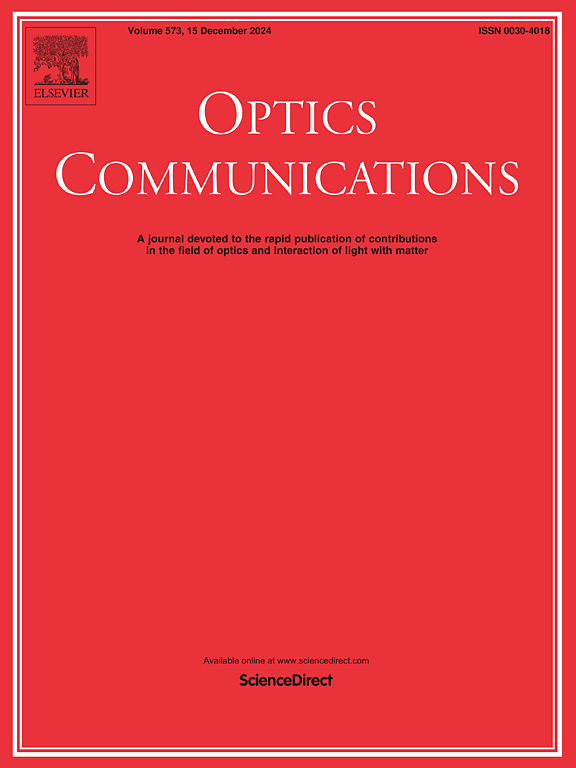Actively tunable multi-frequency narrowband terahertz absorber using graphene metamaterials
IF 2.2
3区 物理与天体物理
Q2 OPTICS
引用次数: 0
Abstract
This study presents a novel design for a multi-frequency narrowband terahertz absorber utilizing graphene metamaterials. Unlike other graphene-based terahertz absorbers, the proposed structure eliminates the need for graphene patterning, significantly simplifying the fabrication process and enhancing its feasibility for practical applications. The absorber consists of four layers: an Au substrate, a dielectric layer, a graphene layer, and a patterned Au absorption layer. The pattern of the metasurface absorption layer is composed of four rotationally symmetric rectangles and rings, which achieve high absorption performance while eliminating the need for graphene patterning. The simulation results indicate that when the terahertz wave strikes the absorber at a perpendicular angle and the graphene Fermi level is adjusted to 0.1 eV, the absorber achieves near-perfect absorption at five frequencies: 4.4362 THz, 6.4261 THz, 7.1191 THz, 9.1981 THz, and 9.604 THz, with a maximum absorption rate of 99.828 %. By determining the relative impedance of the absorber using the parameter inversion method through simulation, it is observed that the absorber follows the impedance matching theory. Moreover, through the study of the electric field distribution corresponding to the absorption peak, it is found that when the terahertz wave is incident on the absorber, a high absorption effect is produced due to the localized surface plasmon resonance (LSPR) between the Au layer and the graphene layer on the surface, LSPR technology has been widely utilized in applications such as sensors and absorbers. Furthermore, by adjusting the Fermi level of graphene and analyzing the absorption spectrum, it is demonstrated that the Fermi level enables active tunability of the absorber, highlighting its potential value in the field of terahertz smart devices.
求助全文
约1分钟内获得全文
求助全文
来源期刊

Optics Communications
物理-光学
CiteScore
5.10
自引率
8.30%
发文量
681
审稿时长
38 days
期刊介绍:
Optics Communications invites original and timely contributions containing new results in various fields of optics and photonics. The journal considers theoretical and experimental research in areas ranging from the fundamental properties of light to technological applications. Topics covered include classical and quantum optics, optical physics and light-matter interactions, lasers, imaging, guided-wave optics and optical information processing. Manuscripts should offer clear evidence of novelty and significance. Papers concentrating on mathematical and computational issues, with limited connection to optics, are not suitable for publication in the Journal. Similarly, small technical advances, or papers concerned only with engineering applications or issues of materials science fall outside the journal scope.
 求助内容:
求助内容: 应助结果提醒方式:
应助结果提醒方式:


